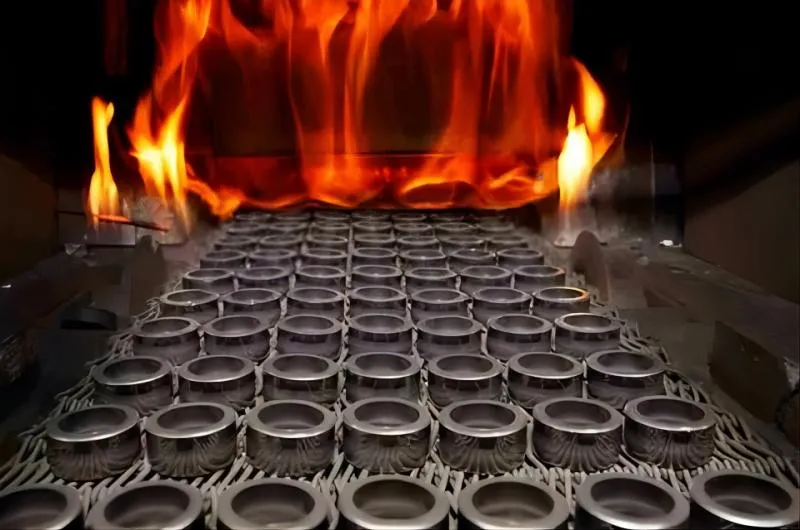BY  GENN
GENN
2024/04
Blog
What Features Distinguish Materials Used In Powder Metallurgy?
What Is Powder Metallurgy Process?
Metal powder, or a combination of metal and non-metal powder, is the raw material used in the powder metallurgy process. It is then molded and sintered to create metal materials, composite materials, and other kinds of products. However, because molds and metal powder are expensive, they shouldn’t be utilized for tiny batches or products that are too big.
These days, powder metallurgy technology is one of the most dynamic areas of new materials science, with applications ranging broadly across transportation, machinery, electronics, aerospace, weapons, biology, new energy, information, and nuclear industries.
Which Steps Make Up the Process of Powder Metallurgy?
The usual steps involved are as follows:
- Production of powder: Making fine metal powder is the initial stage. Several techniques, including atomization, mechanical alloying, and chemical reduction, can be used to achieve this.
- Powder mixing: To obtain the necessary materials, metal powders are combined. This stage guarantees that the various metal powders and any necessary additions are distributed evenly.
- Compaction: Press the combined powder into the required shape using a press. Depending on the material and necessary qualities, this phase is often carried out at room temperature or a high temperature.
- Sintering is the process of sintering compacted powder. To get the particles to adhere to one another, the compressed powder must be heated to a temperature lower than its melting point. As a result, a green body—a solid, porous structure—is produced.
- Secondary processing: To enhance the part’s performance, further secondary processing might be carried out following sintering. Heat treatment, machining, surface finishing, and coating are a few examples of these procedures.
- Finishing: The part must be finished to provide the necessary dimensional precision and surface finish. This can be done by coating, grinding, or polishing the item.
However, during the sintering process, things like particle rearrangement, pore reduction, pore shrinkage, and deformation will prevent the pores inside the powder metallurgy material from being fully released. Low-toughness powder metallurgy materials’ internal pores will concentrate stress when the material is under stress, which can lead to cracking. After polishing, the pores in powder metallurgy materials with high surface quality requirements will quickly produce microscopic pores, which will alter the product’s appearance.
What Qualities Distinguish Powder Metallurgy Materials and Procedures From Conventional Material Procedures?
- A range of metals, metals and ceramics, metals, and plastics with widely differing melting points and densities can be obtained through the powder metallurgy process, which is carried out at a melting point lower than that of the base metal. Additionally, a variety of heterogeneous special functional composite materials and products can be obtained.
- High material performance: Fine metal or alloy powder made using specific techniques has fine, uniform grains and a very quick rate of solidification, guaranteeing a uniform material structure, steady performance, and favorable qualities for both hot and cold processing. By increasing the relative strengthening content, which is not restricted by the elements and content of the alloy, new material systems can be developed.
- Powder raw materials can be directly formed into blanks or net-shaped pieces with little to no margin using a variety of forming techniques. This considerably reduces the amount of machining required, boosting material utilization and cutting costs.
Which Types of Powder Metallurgy Exist?
- Tungsten and many goods made of alloys and refractory metals
- Drill bits, turning tools, milling cutters in cutting tools and wear-resistant tools, as well as molds, are made from tungsten carbide (WC), titanium carbide (TiC), tantalum carbide (TaC), and other hard alloys employing Co, Ni, etc. as binders.
- Textile rings, sintered metal filters, and sintered oil bearings are made from porous materials, including Ni, Cu alloy, and stainless steel.
What are The Process Properties of Powder?
- Filling characteristics: describe the tightness of powder when it accumulates naturally without interference from outside sources. Often written as bulk density or density in bulk. The size, shape, and surface features of the particles affect the filling qualities of powders.
- Fluidity is the powder’s ability to flow; it is commonly measured as the amount of time needed for 50 grammes of powder to exit a standard funnel. Particle adhesion has an impact on flowability.
- Compressibility: Measured in a standard mold under specific lubrication conditions, compressibility is the ability of the powder to be compacted during the pressing process. It is quantified by the compact density attained under the specified unit pressure. Particle microhardness, or plasticity is one factor influencing powder compressibility. Plastic metal powders are more compressible than brittle and hard materials; the powder’s compressibility is also influenced by the structure and form of its constituent particles.
- Formability is the compact’s capacity to hold its shape after the powder is pressed; it is defined as the lowest pressing pressure at which the powder can be shaped and is correlated with the compact’s strength. The shape and structure of particles have an impact on formability.










